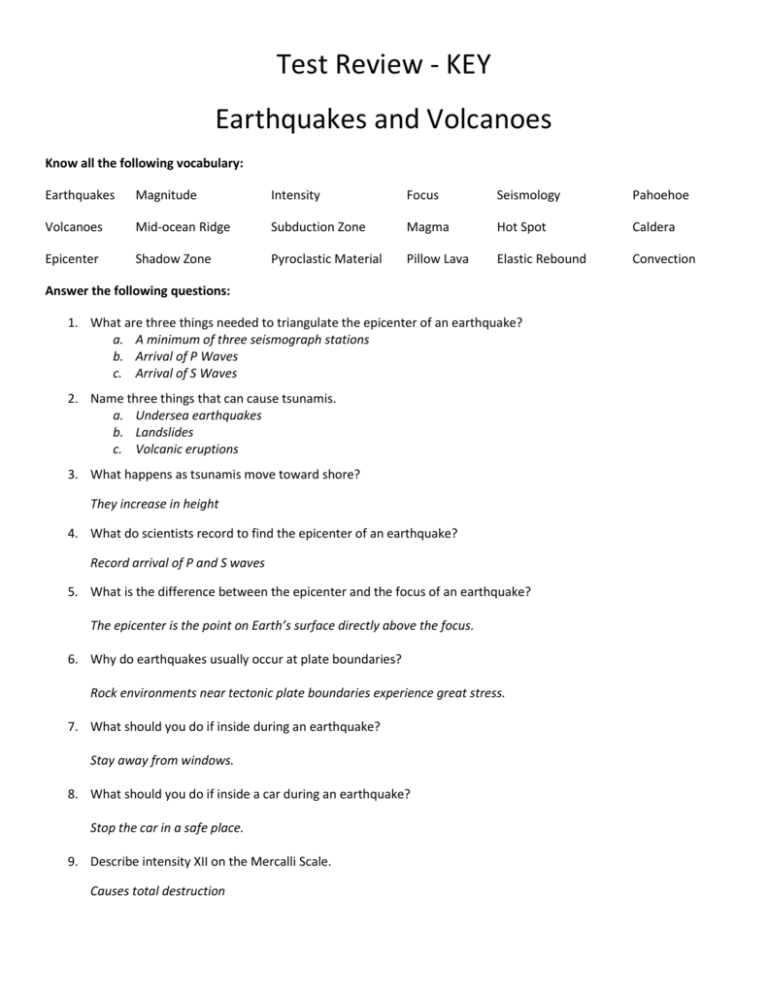Test Review - KEY Earthquakes and Volcanoes Know all the
advertisement

Test Review - KEY Earthquakes and Volcanoes Know all the following vocabulary: Earthquakes Magnitude Intensity Focus Seismology Pahoehoe Volcanoes Mid-ocean Ridge Subduction Zone Magma Hot Spot Caldera Epicenter Shadow Zone Pyroclastic Material Pillow Lava Elastic Rebound Convection Answer the following questions: 1. What are three things needed to triangulate the epicenter of an earthquake? a. A minimum of three seismograph stations b. Arrival of P Waves c. Arrival of S Waves 2. Name three things that can cause tsunamis. a. Undersea earthquakes b. Landslides c. Volcanic eruptions 3. What happens as tsunamis move toward shore? They increase in height 4. What do scientists record to find the epicenter of an earthquake? Record arrival of P and S waves 5. What is the difference between the epicenter and the focus of an earthquake? The epicenter is the point on Earth’s surface directly above the focus. 6. Why do earthquakes usually occur at plate boundaries? Rock environments near tectonic plate boundaries experience great stress. 7. What should you do if inside during an earthquake? Stay away from windows. 8. What should you do if inside a car during an earthquake? Stop the car in a safe place. 9. Describe intensity XII on the Mercalli Scale. Causes total destruction 10. How does the ground move under the influence of Rayleigh waves? In an elliptical, rolling motion 11. Name three things that signal a volcanic eruption. A change in earthquake activity Bulging volcano surface A change in the amount and composition of volcanic gases 12. What is another name for composite volcanoes? stratovolcanoes 13. What happens at a convergent boundary when an island arc forms? Oceanic lithosphere subducts beneath oceanic lithosphere. 14. Which scale most accurately measures a large magnitude earthquake? Moment Magnitude Scale 15. What happens to buildings during an earthquake? It may sway or collapse. 16. Which magnitude scales express measurements numerically? Both the Richter and the Moment Magnitude Scales 17. What is the difference between the Richter and Mercalli Scales? The Richter Scale measures magnitude; The Mercalli Scale measures intensity. 18. Which type of volcano is made up of pyroclastic material? Cinder Cone 19. Name three ways to classify a volcanic eruption. Lava flows, Quiet, Explosive 20. Compare the chemical compositions of mafic and felsic magma. Mafic magma is rich in magnesium and iron; felsic magma is rich in feldspar and silica 21. How does the chemical composition of magma affect the explosivity of a volcanic eruption? Low-viscosity magma causes quiet eruptions; high-viscosity magma causes explosive eruptions. Also, be able to read a seismograph and analyze images.










